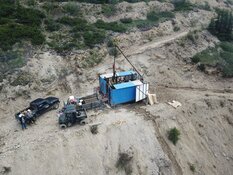The Mining Report: In February, BMO Capital Markets hosted the 24th annual Global Mining & Metals Conference in Hollywood, Florida, where BMO posed the same 15 questions to both mining company managers and professional mining investors. The answers often illustrated a divide between those two camps. Which side has a better grip on reality? And why?
Jessica Fung: The fundamental difference between mining companies and investors is that they have very different realities in which they make investment decisions. Mining companies, by virtue of their operations, have to make long-term decisions. Exploration, engineering and construction of a mine take years, and then it's in production for decades. So mining companies have to invest through the commodity cycle, but the challenge now is that the development timelines are longer and capital intensity is higher. Investors, for the large part, still invest in line with commodity price cycles, which tend to be shorter term and more volatile. It's essentially a mismatch in investment timelines.
Tony Robson: High commodity prices would cure most problems, but as Jessica stated, there is a mismatch between the time horizons. A fund manager can have his investment horizons measured over weeks, months, quarters at best, whereas a mining executive has to look out a decade or more.
TMR: Timelines aside, do you think that these two groups have a firm understanding of each other's needs?
TR: When you look at the 15 questions we posed at the BMO Global Metals & Mining Conference, there were certainly large gaps between the responses from the investment executives and from the mining executives. Some of those gaps will always remain, but greater dialogue could certainly assist in bringing those two groups closer together.
TMR: Would higher commodity prices get investors and mining managers closer to the same page?
TR: There is nothing like rising commodity prices and rising share prices to make everybody feel happy whether you're a mining company executive or a fund manager. Rising prices cure most ills, absolutely. However, it's not likely that we'll see that occur over the coming 12 or 18 months. Fortunately, there is light at the end of the tunnel. We've certainly been a long time into this downturn, three to four years, depending on how you want to define the starting point. If you look at the last 20 years for commodity price cycles and share price cycles in mining, this is certainly a long, long downturn.
"We recently produced some research on junior gold companies, and we found Asanko Gold Inc. looking quite attractive."
TMR: According to the aforementioned BMO survey, 52% of mining managers believe mining shares are undervalued whereas 47% of mining investors believe share prices are overvalued. Who makes the better argument?
TR: Investors have greater expertise and knowledge of share evaluations than the mining executives who have to look at keeping the mines running. With lackluster commodity prices expected in the near term and with other stock market sectors running quite strongly, the financial markets are unfortunately saying, "This is what your company is worth at this point in the commodity price cycle."
TMR: According to your survey, mining investors seem to have a gripe with mining executive compensation, with 78% saying it's egregious. Do they have a case?
TR: Executive compensation is down over the last two years as newer CEOs and CFOs replace old executives. Over the previous two years, we have seen about 30 new CEOs in the gold companies we cover. Nearly all of the large-cap miners also have new CEOs. That said, the answer is a qualified yes.
TMR: Another place where investors and managers disagree is how to allocate capital. Tony, in your experience, are mining companies better off returning more capital to investors or investing in further growth?
TR: Ivan Glasenberg, the CEO at Glencore International Plc (GLEN:LSE), was quite vocal on this issue at this year's BMO mining conference. He argued that the current low commodity prices are the result of too much capital being allocated to new mines, the output of which is now flooding the market, rather than low demand. When you think that the iron ore miners have spent about $130 billion ($130B) in capital expenditures (capex) in recent years to increase production and the copper miners have spent $140B in capex to increase production—and those are just two examples—you can see how much capital has gone into mines and has not been returned to shareholders. I suspect that in the coming cycle, we'll see a greater balance between the two, although capex will still always be greater than cash returns to shareholders.
TMR: One thing both sides agreed on is that the companies mostly likely to be active in mergers and acquisitions (M&A) are the intermediate producers. Why?
TR: Most of the big-cap miners do not have what we call a "hunting license." They have new CEOs who have promised not to buy anything, so they certainly won't be busy in M&A deals. At the smaller end of the scale, the juniors don't have the cash to buy assets or have low share prices that can't be used as currency to buy assets or other companies. The intermediates, in our view, have the desire to get bigger, and there's a tacit agreement with the shareholders that they can buy companies or assets, either with cash or shares, as an accretive way to grow.
TMR: What are some intermediate companies that are likely to be active in M&A?
TR: To give a list of companies that could be targets is somewhat speculative, and I'm going to err on the side of caution. But we recently produced some research on junior gold companies, and we found Guyana Goldfields Inc. (GUY:TSX), Torex Gold Resources Inc. (TXG:TSX), Asanko Gold Inc. (AKG:NYSE.MKT; AKG:TSX; ), Romarco Minerals Inc. (R:TSX) and Continental Gold Ltd. (CNL:TSX; CGOOF:OTCQX) looking quite attractive.
TMR: Let's focus on commodity prices. Both sides of your survey agreed that higher commodity prices are needed to reinvigorate mining investor interest. Is that really a panacea? Is it realistic?
JF: Yes, higher commodity prices are needed because mining companies, at the end of the day, are price takers. Higher commodity prices will drive their margin expansion and their share prices higher. Over the longer term, the correlation between mining share price performance and the underlying commodities is about 80%. In the last three years, that correlation has been even higher, around 90% for industrial metals and around 97% for precious metals. So, absolutely, higher commodity prices are needed to reinvigorate mining investor interest.
Is it realistic? It is realistic because commodity cycles come and go. The most recent cycle was largely driven by China, which was a significant, once-in-a-lifetime type of event. So it's understandable that given such a large event in the upturn, the downturn could be more prolonged than in previous cycles, but at some point, commodity prices will move higher again.
TMR: On a percentage basis, will base metals outperform precious metals like gold and silver in 2015?
JF: The base-over-precious metals trade was the consensus expectation late last year and earlier this year. In our view, there's risk for both base and precious metals this year. Base metal prices are under a lot of pressure due to risks and uncertainty on the demand side, especially from China but also Europe and Japan. Precious metals, which tend to be a safe-haven trade over the longer term, are struggling to make real gains this year because central banks globally are doing all they can to spur economic growth. As long as we expect to muddle through this recovery, precious metal prices are probably going to be range bound at best and base metals likewise, range bound at best unless there is a real pickup in demand.
From a fundamental supply/demand perspective, we see the most upside for nickel. Indonesia's export ban last year removed 20% of supply from the market. The question is whether the supply gap can be filled from other sources, which we witnessed last year. And demand uncertainty overhangs this market. It's a challenging cycle for all commodities at this point.
TMR: You recently told an audience in Toronto that higher copper prices require a supply side response. Please briefly explain.
JF: This is the case for almost all commodities right now, but I used copper as an example. Higher commodity prices require an undersupplied market. Historically, this is driven by a supply gap, typically after economic recessions. So during the recovery, demand came back strong. Investments on the supply side slowed during recessions and supply was unable to catch up and we had that supply gap. That drove prices higher. The issue in our current recovery is that demand has yet to show a strong comeback. We can look to quantitative easing for pulling forward some of this demand during the financial crisis, but China's growth, which is now 40% of global commodities demand, is also slowing.
So for us to reach that undersupplied market and to underpin a recovery in commodity prices, we need to see a supply response because the demand side is not going to pull us out. We need to see the miners and smelters cut supply to the market. But, as Tony said, we've had hundreds of billions of dollars in capital investments made over the last 10 years during the commodities boom, so the supply growth continues. This is a challenge for the commodity price recovery in this cycle.
TMR: What's your near-term and medium-term outlook for iron ore?
JF: I'm not sure we're quite at the bottom yet, but given that we've come down 65% in the last year, I hope we're close to the bottom. Our outlook is lower for longer. Iron ore production expansions by the majors—Rio Tinto Plc (RIO:NYSE; RIO:ASX; RIO:LSE; RTPPF:OTCPK), BHP Billiton Ltd. (BHP:NYSE; BHPLF:OTCPK), Vale S.A. (VALE:NYSE), Fortescue Metals Group Ltd. (FMG:ASX) and we could include Anglo American Plc (AAUK:NASDAQ)—have added or are adding the equivalent of 20% of global supply to the market. This is at a time when demand from the steel sector is slowing. We need to see supply cuts in the iron ore market, which will eventually materialize, but we don't know when. Cutting supply is not just about stopping production and cutting one's losses. Money needs to be spent after shutting down operations, so for these miners, it's tough to make the decision to cut supply. Unfortunately, the near-term and the medium-term outlook is lower for longer because of the challenges to cut supply in an environment where demand growth is slowing.
TMR: A recent BMO Capital Markets research report read "attractive sector seeks smart investor for long-term relationships" and suggested several large-cap, diversified miners with upside. Please explain your investment thesis for these names.
TR: We're certainly in a bear market for metals and mining companies. One way to go toward safer investments in a downturn is to gravitate toward the bigger-cap, global diversifieds. Generally, they're very well run. The balance sheets are strong. Costs are being aggressively attacked. They are a relatively low-risk way to park your cash until commodity prices recover. The average dividend yield on the global big caps is excellent. For example, BHP Billiton is trading on a 5.6% dividend yield on BMO forecasts. So while you're holding those stocks and waiting for an upturn, you can actually invest in some pretty safe securities.
TMR: But companies like BHP and Rio Tinto have about 40% of their business in iron ore production, where the near- and medium-term forecast is not all that rosy. Can they make money at $80/ton iron?
TR: The answer, of course, is always every share has a price. Share prices across the board are low, so we know that in the long run you will likely make money by buying metals and mining stocks right now. Second, the big caps, Rio Tinto and BHP Billiton in particular, are in the bottom quartile of the global cash cost curve, so they will make money whether the iron ore price is $50/ton or $100/ton.
TMR: Are those your picks in the large-cap diversified space?
TR: We like Rio Tinto, Glencore and BHP Billiton in that order. As you were just mentioning, Rio Tinto might sound like a funny choice given weak iron ore prices, but it's a well-run company, has low costs and is currently giving back $2B to shareholders on top of the regular $4B/year dividend. Again, a lot of these big caps have guaranteed, progressive dividend policies, which means that if you get it over one year, you'll get the same dividend next year or higher. So there's a reasonable amount of safety and security in those stocks.
Glencore is quite different, more aggressive, perhaps M&A oriented but has a very defensive marketing arm, which is currently about 40% of pretax earnings for the company, and that gives it some security, some buffer, through the commodity price cycle.
TMR: Are the bigger, diversified miners likely to acquire assets that have been overly punished by the market's response to six-year low iron ore prices?
TR: The answer is quite clearly no. The exception here is Glencore, which is certainly still willing to look at M&A and is actually no doubt happy with the current low share prices or valuations of potential targets. I would expect Glencore to be the lone example of a company willing to buy at the big end of the scale.
TMR: A few years ago, Franco-Nevada Corp. (FNV:TSX; FNV:NYSE) made a lot of money in the gold space through royalties and streaming. Then people began to copy that model. Glencore is largely a commodities trader but went upstream by buying Xstrata PLC (XTA:LSE). Do you see companies trying to copy the Glencore model?
TR: Concerning royalty streaming deals, we've certainly seen an increase in the number of companies that look at those business plans—Silver Wheaton Corp. (SLW:TSX; SLW:NYSE) of course, Altius Minerals Corp. (ALS:TSX.V), Anglo Pacific Group Plc (APF:LSE). So there are quite a few companies now, which tend to be in the middle or at the smaller end of the scale, that will certainly look at royalty streaming deals. The other side, as you mentioned, is Glencore and the marketing side. No, I don't think anybody would try and replicate a Glencore model. It's pretty difficult to make inroads in getting global market share as large as it has for most of the traded commodities.
TMR: Do you have any other "Market Outperform" or "Perform" ratings on companies under coverage?
TR: I have a couple of smaller-cap stocks that we have "Outperform" ratings on like Labrador Iron Ore Royalty Corp. (LIF.UN:TSX), which is very defensive from a balance sheet point of view but is currently badly buffered by weak iron ore prices. There's a little bit of risk there.
Longer term, I like Turquoise Hill Resources Ltd. (TRQ:TSX; TRQ:NYSE), which certainly has a lot of political risk in Mongolia but controls the magnificent Oyu Tolgoi copper-gold mine and future expansion in one of the world's largest copper-gold deposits. Turquoise Hill Resources owns 66%, and the Mongolian government owns the rest. That's certainly a higher risk/higher reward play.
TMR: How does Labrador Iron Ore's dividend compare to its peers'?
TR: Generally, Labrador Iron Ore is a higher dividend-yielding stock. It will often have a dividend yield anywhere up to 10%. Right now, with low iron ore prices, it won't be receiving a dividend from its 15% stake in the Iron Ore Company of Canada but for as long as the mine is still running, it still collects a 7% off-the-top sales revenue royalty. Its dividend yield is quite similar to the big caps at about 5–7%.
TMR: Tony and Jessica, what's your advice to mining investors as low metal prices persist?
TR: My advice would be to hang in there. As mentioned, this must be the fourth year of a downturn in mining. That would make it one of the longest bear markets in metals mining in certainly the last 20 years, if not 30 years. The low point is likely to be in the next 12–18 months before the upturn starts. Bear markets do not last forever. They are followed by bull markets. At the same time, we would err on the side of caution for investments this year.
JF: We are very much looking for that upturn in the commodity cycle. It feels challenging right now. The sentiment is certainly very bearish in this market. We've seen the share prices reflect that. That being said, we are seeing a little bit of interest from some generalist investors who have seen many other sectors outperform, with mining really lagging. At the end of the day, we still need to see commodity price influence, but I think when the upturn comes, it could come in a big way given that there has been a real slowdown in capital investments by the mining companies in the last couple of years. That will certainly set us up for that supply gap that we need to see.
TMR: Tony and Jessica, thanks for your insights.
 Jessica Fung is a commodities analyst with BMO Capital Markets. Fung is responsible for providing fundamental research and price forecasts for the major commodities within the Global Metals & Mining equity research team at BMO Capital Markets. Her analysis includes tracking 800 mining operations with her team, as well as publishing insight into pricing and commodities consumption trends for institutional, metals trading and corporate clients. Prior to covering mining commodities, Fung was an equity research associate with a focus on the large-cap diversified miners and iron ore producers. Fung has appeared on BNN television, Kitco and Dukascopy TV, and been quoted in other press such as Financial Times, Wall Street Journal, LatinFinance, Globe & Mail, Mineweb and Chile Explore. She holds a Masters of Business Administration from the Rotman School of Management at the University of Toronto, and a Bachelor of Applied Arts from Ryerson University.
Jessica Fung is a commodities analyst with BMO Capital Markets. Fung is responsible for providing fundamental research and price forecasts for the major commodities within the Global Metals & Mining equity research team at BMO Capital Markets. Her analysis includes tracking 800 mining operations with her team, as well as publishing insight into pricing and commodities consumption trends for institutional, metals trading and corporate clients. Prior to covering mining commodities, Fung was an equity research associate with a focus on the large-cap diversified miners and iron ore producers. Fung has appeared on BNN television, Kitco and Dukascopy TV, and been quoted in other press such as Financial Times, Wall Street Journal, LatinFinance, Globe & Mail, Mineweb and Chile Explore. She holds a Masters of Business Administration from the Rotman School of Management at the University of Toronto, and a Bachelor of Applied Arts from Ryerson University.
 Tony Robson is a Managing Director and Co-Head for Global Mining Research at BMO Capital Markets. He joined BMO Capital Markets in 2007, specializing in the large-cap diversified mining sector and base metals. Robson co-founded Global Mining Research in Australia, a well-regarded research organization specializing in international metal and mining companies. He has previously worked as a senior analyst at BNP Paribas, Prudential Securities and HSBC, where he covered most sectors in base and precious metals. Robson has 29 years of sell-side analyst experience and a solid record of being ranked as a top analyst by various surveys and organizations. He holds a Bachelor of Science (Honours) in geology and geophysics from the University of Sydney (1981), a Master of Science in geology from the University of Sydney (1987), a Master of Mineral Economics from Macquarie University (1993) and a Graduate Diploma in applied finance and investment analysis from the Securities Institute of Australia (1988).
Tony Robson is a Managing Director and Co-Head for Global Mining Research at BMO Capital Markets. He joined BMO Capital Markets in 2007, specializing in the large-cap diversified mining sector and base metals. Robson co-founded Global Mining Research in Australia, a well-regarded research organization specializing in international metal and mining companies. He has previously worked as a senior analyst at BNP Paribas, Prudential Securities and HSBC, where he covered most sectors in base and precious metals. Robson has 29 years of sell-side analyst experience and a solid record of being ranked as a top analyst by various surveys and organizations. He holds a Bachelor of Science (Honours) in geology and geophysics from the University of Sydney (1981), a Master of Science in geology from the University of Sydney (1987), a Master of Mineral Economics from Macquarie University (1993) and a Graduate Diploma in applied finance and investment analysis from the Securities Institute of Australia (1988).
Read what other experts are saying about:
Want to read more Mining Report interviews like this? Sign up for our free e-newsletter, and you'll learn when new articles have been published. To see a list of recent interviews with industry analysts and commentators, visit our Streetwise Interviews page.
DISCLOSURE:
1) Brian Sylvester conducted this interview for Streetwise Reports LLC, publisher of The Gold Report, The Energy Report, The Life Sciences Report and The Mining Report, and provides services to Streetwise Reports as an independent contractor. He owns, or his family owns, shares of the following companies mentioned in this interview: None.
2) The following companies mentioned in the interview are sponsors of Streetwise Reports: Asanko Gold Inc., Continental Gold Ltd., Guyana Goldfields Inc. and Silver Wheaton Corp. Franco-Nevada Corp. is not associated with Streetwise Reports. The companies mentioned in this interview were not involved in any aspect of the interview preparation or post-interview editing so the expert could speak independently about the sector. Streetwise Reports does not accept stock in exchange for its services.
3) Jessica Fung: I own, or my family owns, shares of the following companies mentioned in this interview: None. I personally am, or my family is, paid by the following companies mentioned in this interview: None. BMO disclosures are available here. I was not paid by Streetwise Reports for participating in this interview. Comments and opinions expressed are my own comments and opinions. I determined and had final say over which companies would be included in the interview based on my research, understanding of the sector and interview theme. I had the opportunity to review the interview for accuracy as of the date of the interview and am responsible for the content of the interview.
4) Tony Robson: I own, or my family owns, shares of the following companies mentioned in this interview: None. I personally am, or my family is, paid by the following companies mentioned in this interview: None. BMO disclosures are available here. I was not paid by Streetwise Reports for participating in this interview. Comments and opinions expressed are my own comments and opinions. I determined and had final say over which companies would be included in the interview based on my research, understanding of the sector and interview theme. I had the opportunity to review the interview for accuracy as of the date of the interview and am responsible for the content of the interview.
5) Interviews are edited for clarity. Streetwise Reports does not make editorial comments or change experts' statements without their consent.
6) The interview does not constitute investment advice. Each reader is encouraged to consult with his or her individual financial professional and any action a reader takes as a result of information presented here is his or her own responsibility. By opening this page, each reader accepts and agrees to Streetwise Reports' terms of use and full legal disclaimer.
7) From time to time, Streetwise Reports LLC and its directors, officers, employees or members of their families, as well as persons interviewed for articles and interviews on the site, may have a long or short position in securities mentioned. Directors, officers, employees or members of their families are prohibited from making purchases and/or sales of those securities in the open market or otherwise during the up-to-four-week interval from the time of the interview until after it publishes.













































